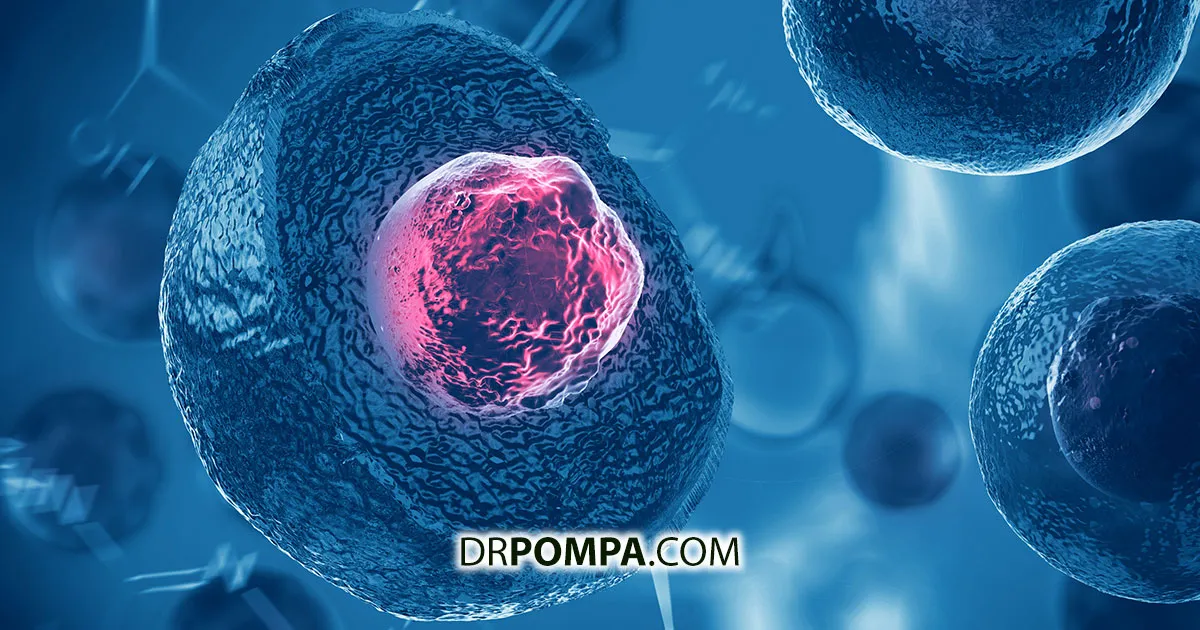The Principles of Stemnomics: I would like to introduce you to Stemnomics. This modern concept harnesses ancient wisdom to enhance the production and utilization of stem cells in your body. In an ever-evolving world, it can be difficult to express ourselves with a stagnant language. I’ve developed Stemnomics as a way to discuss the emerging field focused on maximizing our ability to produce and use these incredible powerhouses to not only survive but to thrive.
It has become my life’s mission to empower individuals with information, all of which is rooted in my personal health journey and transformation. The principles of Stemnomics are the culmination of my life’s work, all rooted in the ancient wisdom of our ancestors.
Let The Body Do The Healing: Stem Cells 101
My core philosophy is to remove the interference and let the body do the healing, and the principles of Stemnomics hinge on this same principle. Stem cells are the seeds of all biological life. All human life begins with a single stem cell, which then multiplies exponentially to eventually give rise to trillions of cells and form every system in the body. These cells are like a blank canvass that the body can use as needed to create or repair the body. A stem cell can turn into a specialized cell (brain, heart, lung, etc.) to repair or regenerate our organs. This repair becomes increasingly vital as we age. Although our body continuously needs the support of stem cells, many factors contribute to the depletion of our reserve.
My core philosophy is to remove the interference and let the body do the healing. The principles of Stemnomics hinge on this same principle: boosting the body’s ability to create and use stem cells and allow the body to use them as needed.
Stemnomics: A Multi-Therapeutic Approach
Stemnomics is the field that harnesses the power of stem cells through the use of therapeutic strategies. It’s the method I use not only to help my clients, but also my family and my self—to support the body’s innate intelligence by maximizing endogenous stem cell production.
These strategies revolve around manipulating your diet (what you eat, and when you eat it), and focus on intermittent fasting, ketosis (fat-adaptation), diet variation (feast/ famine cycling), and prolonged water fasting (5+ days).
Intermittent Fasting: Intermittent Fasting is an eating pattern that restricts food consumption to a shortened window of time each day to allow for a period of extended fasting. It is the one aspect of our Stemnomic principles that address when you eat, as opposed to what you eat. The benefits of intermittent fasting begin around the 12-hour mark, but as metabolic flexibility increases, the window can increase to 16, 18, or even 20 hours of daily fasting. Some people progress to one single (substantial) meal per day.
Intermittent fasting improves hormone sensitivity, fat-burning ability, boost growth hormones, and harness the benefits of autophagy, which include longevity, downregulation of inflammation, and the production of new stem cells and new immune cells.
Ketosis: the ketogenic diet is a high fat, moderate protein, low carbohydrate way of eating.
Eating this way over a prolonged period puts your body into what we call ‘ketosis,’ when fat (as opposed to glucose) becomes the primary source of fuel.
Ketosis is a fundamental component of Stemnomics. It promotes similar autophagy benefits that prolonged water fasting does. Both methods force the body to burn fat for fuel; secondly, because it opens the door for diet variation (see below), and thirdly because it prepares the body for longer fasts (particularly when combined with IF).
Diet Variation:
The Diet Variation component of Stemnomics is the missing piece for many people who are currently on a full-time ketogenic diet; it involves the introduction of high carb days and day(s) of total fasting. This aspect is crucial to get the most out of the program because periods of feasting creates adaptive stress, which increases hormone optimization, fat adaptation, autophagy, and stem cell production.
Going back and forth between fast days and feast days is the key because the body is allowed to experience the autophagy pathway (that is used for recycling) and the mTor pathway (used for regeneration/ growth). The feast days are not only there to keep you on track with your plan (although it does do so as a bonus side effect), but it is essential to remind the body that it is not starving. A long term keto-only diet will eventually plateau and even begin to regress in progress (slowing down your metabolism, putting on belly fat, etc.).
Diet variation can be implemented in multiple different ways. Weekly variations could include four days of a ketogenic diet, two days higher carb/ protein, and one-day water fasting, or 3-2-2 (respectively). Monthly variation can work well for women, who have higher carbohydrate cravings during their menstrual cycle. It can keep keto most of the month, introducing a higher carb diet for the week surrounding their cycle. Seasonal variation is the most natural ancestrally, whereby winter would follow a more ketogenic diet, and summer a higher carb diet.
Incorporating diet variation into your life is a deeply personal choice. It should reflect a pattern that is easiest to incorporate into your everyday life so that you can maintain it in the long run. In my household, we like weekly variation with feast days on the weekends.
Prolonged Water Fasting:
A 5+ day water fast is the peak of this mission to maximize stem cell production, in that it is the most powerful way to support the body’s ability to create them, and heal. The use of intermittent fasting, ketosis, and diet variation are all strategies that increase the body’s metabolic flexibility and health in preparation for a prolonged fast.
Fasting is the oldest and most potent ancient healing modality, and indeed for good reasons. Recent research shows that fasting for seventy-two hours can regenerate the entire immune system! One way it does this is by raising stem cells that turn into new and improved immune cells. These new healthy cells replace old and dysfunctional cells in the body. These dysfunctional cells that are destroyed through autophagy during a fast are the ones that can lead to disease, hyper immunity, autoimmunity, and cancer.
All these therapeutic strategies come together to form the emerging field of Stemnomics, used strategically to promote the body’s own ability to create and use stem cells.
You’ve heard the buzz about stem cells and anti-aging therapies.
But unless you’re a pro athlete, actor, celebrity or multi-millionaire… it’s not easy to take a week off from work and spend tens of thousands of dollars. Luckily, you don’t have to. There’s a way to tap into the same power as high-end stem cell and anti-aging therapies, for pennies on the dollar, right from the comfort of your own home.
>> And it’s all revealed to you in this exclusive 7-week anti-aging program (available at 85% off) when you buy today.
This guide will help you get all the benefits of these high-end anti-aging modalities—simply by using powerful fasting, nutritional, and dietary changes.
It’s a workbook and doctor-formulated protocol designed to help you:
- Remove the toxins that are speeding up your aging process…
- Leverage fasting to help you shed weight, renew your cells and feel years younger (even if fasting scares you—this guide makes it easy!)
- Activate your stem cells naturally (often as effectively as high-end treatments that cost a fortune)…
- And then sustain the changes you make, so you continue to look and feel younger, year after year…
References
[1] Reya, Tannishtha, et al. “Stem Cells, Cancer, and Cancer Stem Cells.” Nature, vol. 414, no. 6859, 2001, pp. 105–111., doi:10.1038/35102167.
[2] Patterson, Ruth E., and Dorothy D. Sears. “Metabolic Effects of Intermittent Fasting.” Annual Review of Nutrition, vol. 37, no. 1, 2017, pp. 371–393., doi:10.1146/annurev-nutr-
[3] Golbidi, Saeid, et al. “Health Benefits of Fasting and Caloric Restriction.” Current Diabetes Reports, vol. 17, no. 12, 2017, doi:10.1007/s11892-017-0951-7.
[4] Wilson, Jacob M., and Ryan Lowery. The Ketogenic Bible: the Authoritative Guide to Ketosis. Victory Belt Publishing, 2017.
[5] Pompa, Daniel. The Cellular Healing Diet. Health Centers, 2023.
[6] Longo, Valter D., and Mark P. Mattson. “Fasting: Molecular Mechanisms and Clinical Applications.” Cell Metabolism, vol. 19, no. 2, 2014, pp. 181–192., doi:10.1016/j.cmet.2013.12.












